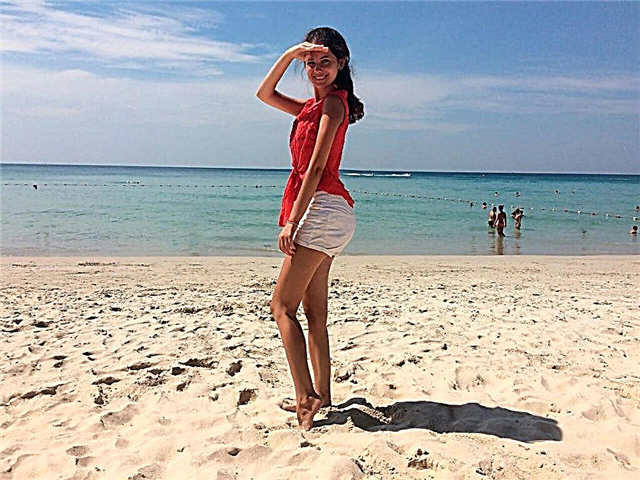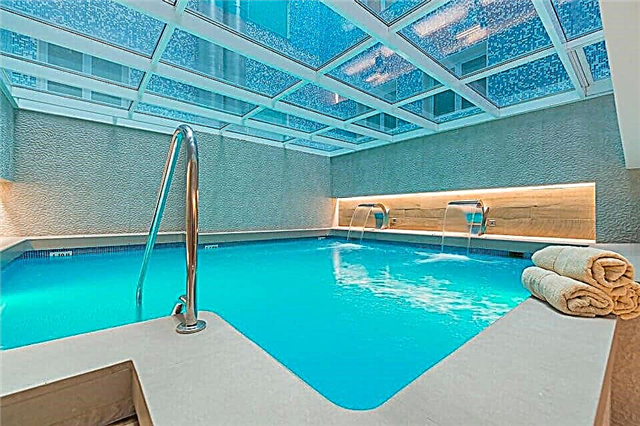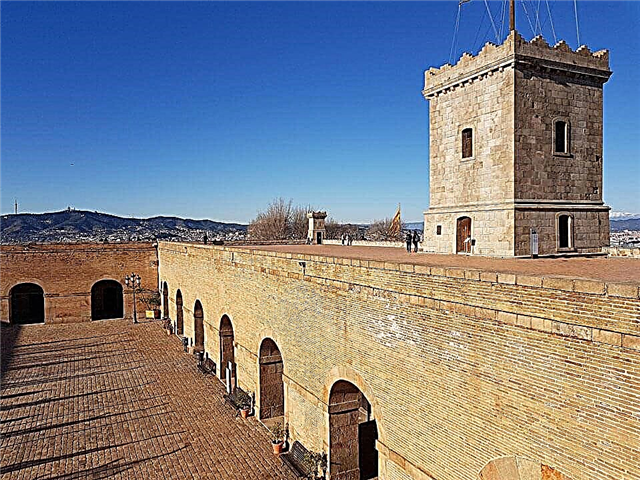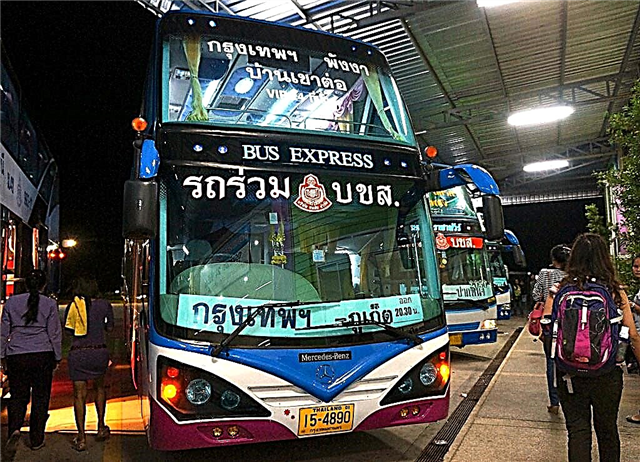Germany is one of the safest countries for tourism, this circumstance attracts millions of travelers every year. The country has a rich history and cultural and educational tourism is one of the main directions. Palaces, fortresses and castles - many of them were built during the Middle Ages. Many of the most varied attractions are UNESCO heritage sites.
A tribute to the past is reflected in "military" tourism. This direction can hardly be called entertainment, however, it is part of the country's history. Fans of event tourism will be pleased with the most massive beer festival - Oktoberfest. For families, walks in park areas and natural attractions, as well as a visit to the zoo in the capital and Europa-park in Rust are suitable.

The best hotels and hotels at affordable prices.
from 500 rubles / day
What to see and where to go in Germany?
The most interesting and beautiful places to visit, photos and a short description.
Brandenburg Gate
The symbol of the capital of Germany, since 1989 the symbol of the reunification of the country. Built by architect Karl Gottgard Langgans. He designed the gate based on the passages of the Acropolis. The building in the style of classicism is perfectly combined with the rest of the buildings on the Parisian square. The decoration of the gate is a 6-meter high quadriga with a chariot driven by Victoria, the goddess of victory. The bas-reliefs of the inner walls depict the exploits of Hercules.

Reichstag
State Assembly Building. This monumental structure is 137 meters long and 103 meters wide. Built in the Italian Renaissance style in 1894. The four towers of the building symbolize the German kingdoms. Their height is 46 meters. You can climb to the top of the glass dome, from where you can see the government quarter and the city itself.

Marienplatz (Munich)
The central square of the city, founded in 1158. The name translates as "Mary Square", received in honor of the column of St. Mary, built in 1638. In the Middle Ages, knightly tournaments were held on the square. The Viktualienmarkt market has also been located on the square since the Middle Ages. The attraction of the square is the Frauenkirche, the tallest cathedral in Munich. A metro junction has been laid under the square.

Oktoberfest
A unique, world-famous beer festival. The largest folklore festivities in the world. It takes place in Munich, about 6 million people visit it annually. Such events as the costume procession and the procession of the owners of beer tents, as well as the opening ceremony of the first beer barrel, have become traditional at the festival. Among the entertainment there are rides: a Ferris wheel, several roller coasters.

Berlin Wall
Remains of the destroyed Berlin Wall, preserved as a memorial site. Part of the complex - "Window of Memory" is dedicated to the Germans who died while fleeing to West Berlin from the East. On a monument made of rusty steel, their black and white photos are placed in several rows. The Chapel of Reconciliation is also part of the complex. The entire Berlin Wall complex covers an area of 4 hectares.

Museum Island (Berlin)
The cultural and architectural museum complex is included in the list of UNESCO heritage sites. It is located at the northern tip of the Spreinsel Island. The most visited is the Pergamon Museum. Its building contains objects of culture and art of the Antique collection and Western Asia, as well as reconstructions of ancient buildings of different peoples. Tourists and art critics from all over the world come to the Museum Island.

Miniature Wonderland (Hamburg)
The world's largest railway model. A must-see point in Hamburg. The structure covers an area of 1,500 m² and contains more than 10 zones of various themes on a scale of 1:87. These are cities and countries, airports and train stations, gardens and parks. More than 1000 trains move between them, 400,000 figures of people and animals are placed. Some details of the layout are activated and controlled by buttons.

Green Vault (Dresden)
Thanks to the collection of treasures in the museum, the Green Vault is called one of the richest treasures in the world. The exposition of the museum has thousands of items, of which about 1,100 exhibits belong to the jewelry art. One of the most luxurious objects is the tabletop composition "Palace Reception in Delhi", decorated with 5,223 diamonds, 175 emeralds, 189 rubies, 53 pearls and one sapphire.

Museums Mercedes-Benz, VW and Audi, BMW and Porsche
Germany is the "birthplace of the automobile" and the cradle of the automotive industry. There are factories of the world's leading auto giants in the country. Automotive tourists can visit the headquarters and museums of their favorite automakers. Get acquainted with the history of enterprises and the biography of the people who created them. View car models, from the very first exhibits to modern concepts. Drive along racing and test tracks.

Memorial to the Victims of the Holocaust (Berlin)
Memorial to the murdered Jews of Europe. Opened in 2005 in Berlin, built by Peter Eisenman. It is a field containing 2,700 gray concrete slabs of various sizes. As conceived by the author, the labyrinths of passages between the blocks evoke a feeling of inconsolability and fear, an understanding of the meaninglessness of the terrible deaths of millions of people. The halls of the Holocaust museum and an information center for the relatives of the victims are located under the memorial.

Topography of Terror (Berlin)
Memorial Center, built in 1987. Created to comprehend and document terror during the time of National Socialism. Initially, the project was located in the basements of the Gestapo, and in 2010 a special building was built for it. The exposition area is 800 m². The center complex also includes an open-air exhibition at the site of Prince Albrecht's palace. About 500 thousand people visit the center annually.

Neuschwanstein Castle
An architectural masterpiece in the forests of the Bavarian Alps. The castle is incredibly popular with tourists. The decoration of the halls is striking in its luxury. In many architectural and artistic elements, the "swan motif" can be traced. The swan is the heraldic symbol of the family of the Counts of Schwangau. This family includes Louis II, the initiator of the construction of the castle. He took a significant part in the development of the palace project, but lived in it for only 172 days. The construction of the castle took 17 years.

Nymphenburg palace
Summer residence of the rulers of Bavaria. The Baroque palace is located in a beautiful park in the west of Munich. The park area is decorated in a French style, like Versailles. The large hall of the palace is made in the rococo style and decorated with frescoes. The Gallery of Beauties presents 36 portraits by Stieler. The palace has a carriage museum and a porcelain museum. Blutenburg Castle is in direct line of sight from the walls of the palace.

Zwinger (Dresden)
An architectural complex in the neo-renaissance and baroque style. Its buildings house the Physics and Mathematics Salon, the Dresden Picture Gallery, as well as museums of porcelain, mineralogy, sculpture and geology. The first building of the complex was built of wood in 1709. The Dresden Art Gallery contains more than 750 paintings by Western European artists. Most of them were written before the beginning of the 18th century.

Sanssouci Palace and Park (Potsdam)
The park was created in the 18th-19th centuries. Its area is 290 hectares, and the length of all footpaths in the park is 70 km. The most interesting building on its territory is the palace of Frederick the Great, built in 1745-1747. At the same time, vineyards were planted. In addition to the palace, the objects of inspection are the Ancient Temple and the Temple of Friendship, the Art Gallery built in 1764, the Grotto of Neptune. The Sanssouci complex is included in the UNESCO list.

Heidelberg castle
The symbol of the architecture of German romanticism. Located on the 80-meter Königstuhl mountain. The raids of the French army in the 17th century left the castle almost in ruins. The castle received the patron saint in the person of the Count of France Charles de Gremberg. He devoted his whole life to looking after the ruins of the castle and published a guide to it. This is what attracted millions of tourists to the castle, mainly from Japan and America.

Frauenkirche (Dresden)
Church of the Holy Virgin Mary in Dresden. Built in 1726-1743 in the Baroque style on the site of the dilapidated old building of the Church of the Most Holy Theotokos. Rebuilt after the bombing of the city in 1945. The stones of the old building stand out with black spots on the bright facade of the new one. The church, 95 meters high, is designed for 3,500 parishioners. It is crowned with a huge dome with a diameter of 26 meters and a weight of 12 tons.

Cologne Cathedral
UNESCO heritage site and symbol of Cologne. The official name is the Cathedral of Saints Peter and Mary. The facade of the cathedral is considered the largest of all the churches in the world. Its width is 86.5 meters, length is 144.5 meters. The towers are 157 meters high and can be seen from anywhere in the city. The interior is decorated with stained glass windows. The shrine of the cathedral is a shrine with the relics of the Magi who visited Christ at birth. Also one of the valuable relics is the staff of St. Peter.

Berlin Cathedral
Evangelical Church, built in 1894-1905. Built from Silesian granite. The height of the cathedral after reconstruction is 98 meters. Visitors can view the crypt of the Hohenzollern dynasty, including the magnificent sarcophagus of Friedrich Wilhelm I. There is a park around the cathedral, in the center of which a fountain is built. The cathedral is located on the Museum Island and is visited by tens of thousands of tourists every year.

Aachen Cathedral
Founded in 796 by order of the Emperor Charlemagne. This is one of the oldest surviving temples of the Middle Ages. The central part of the cathedral is the chapel-tomb, built according to the traditions of Byzantine architecture. A memorial stone on its floor testifies to the fact that Charlemagne, the founder of the cathedral, is buried under it. Over the years, Gothic halls, chapels and the Glass House have been added to the cathedral.

Territory of congresses of the NSDAP (Nuremberg)
In this area with an area of more than 11 km² in the southeast of Nuremberg, the congresses of the NSDAP were held from 1933 to 1938. Structures were built especially for the congresses - a stadium, a Zeppelin tribune, a meeting building and others. Now this site has become an open-air museum. Visitors can experience the impact of the monumental architectural style. The museum organizes guided tours, seminars and talks.

Concentration camps of the Third Reich
The most famous in Germany: Dachau, Buchenwald and Sachsenhausen. The camps of the Third Reich were distinguished by special cruelty to prisoners and inhuman conditions of detention. Not many find the strength to visit them. In Dachau, the exposition tells about the history of the concentration camp and the fate of its prisoners. The main theme of Sachsenhausen is anti-fascist resistance. In Buchenwald, the crematorium, observation towers and camp gates with the inscription "To each his own" are preserved. The opening of all memorial complexes is united by one idea - not to forget the past, so as not to repeat this in the future.

Zollverein Mine (Essen)
Opened in 1830, now abandoned. In the middle of the 19th century, it was considered one of the most productive and largest in the Ruhr area. After it was closed in the 80s of the XX century, it was turned into a historical and cultural monument and taken under the protection of UNESCO. An interesting object of mine and factory architecture is open to tourists. The Coal Road Museum shows all stages of the extraction and processing of this mineral.

Hamburg port
It is considered the third busiest port in Europe. Every year, thousands of flights are made from here to different countries of the world. The port has over 300 berths for ocean and sea vessels. There is a special section of the Hamburg History Museum. They can tell about the development of the port since its opening in 1189. Unofficially, the history of the port dates back to the 9th century, from the moment citizens received the right to trade.

Holstentor (Lubeck)
Medieval city gates in the "brick gothic" architectural style. Also known as the Holstein Gate. Are a protected UNESCO heritage site. Until 1864, they were part of a complex of defensive structures. Two towers with cone-shaped roofs are connected by a span. Since the 1950s, Holstentor has been home to the city's history museum. Cultural events are held in the gate square.

Romer (Frankfurt am Main)
A square in Frankfurt am Main, which is a center of attraction for many tourists. The central place on it is occupied by the old Römer Town Hall - it is in her honor that the entire square is named. The building with a stepped facade has become a real symbol of the city. Its interior is striking in luxury, especially the Imperial Hall, decorated with frescoes. Nowadays Römer is a tourist area with many souvenir shops.

Speicherstadt (Hamburg)
Warehouse district of Hamburg, included in the UNESCO heritage. The harbor storage line is over 1.5 km long. The height of the structures reaches the size of 8-storey buildings, the style of their construction is neo-Gothic. A feature of the buildings is a deep foundation on oak logs. The construction of the district began in 1883 and lasted 44 years. There are many museums in the Speicherstadt area, including the famous Miniature Wonderland.

Porta Nigra (Trier)
Antique gate 30 meters high. Built in 170. Considered the best preserved in the world and listed by UNESCO. No cement was used in the construction of the gate, then it was replaced by liquid tin. They, as well as metal staples, fastened the blocks, which were obtained by hand sawing multi-ton stones. During the Roman Empire, Porta Nigra was used as a city gate.

Valley of the middle Rhine
Natural and architectural landscape on the Rhine river, between the cities of Koblenz and Rüdesheim. Included in the list of UNESCO heritage sites. The area attracts a huge number of tourists. The mountain slopes are covered with vineyards, among them there are more than 20 castles. There are many rocks on the steep banks of the river, about one of which with the name Lorelei is a sad legend.

Zugspitze
The highest point in Germany is 2,962 meters. Located in the village of Grainau on the border with Austria. You can get to the top of the peak by train. The length of the line is 19.5 km. Travel time is 1.5 hours. You can get to the top much faster by one of the cable cars, it will take about 10 minutes. The summit offers a magnificent view of the Swiss Alps.

Rocks and Bastei Bridge
Located in a picturesque park, this region is called "Saxon Switzerland". The cliffs are popular with climbers; they rise nearly 200 meters above the Elbe River. A 100-meter bridge is laid between the rocks above a 40-meter gorge. It was built in 1824 from wood, but in 1851 it was replaced with more durable material. A path across the bridge leads to the ancient fortress.

Europa-park (Rust)
The second most popular amusement park in Europe after Disneyland Paris. Its area of 90 hectares is divided into several parts, each of which symbolizes a separate country, where its flavor has been recreated. The main attraction of the Russian part is a roller coaster with a length of 980 meters and a maximum speed of 100 km / h. The park has about 100 rides, about 150 actors from different countries are involved in show programs.

Berlin Zoo
It is one of the largest zoos in the world. Founded in 1884. More than 2.5 million visit it annually. About 35 thousand animals are collected in the zoo of the capital of Germany. The living conditions of pets are close to natural. There are practically no barriers in the park, however, all conditions have been created for comfortable and safe observation of animals.For example, crocodiles can be watched from a suspension bridge.

English Garden (Munich)
Created in 1792. It starts in the center of Munich and extends 1 km to the north. The landscape design of the park is as close as possible to the natural landscape style. The park is divided by an autobahn into northern and southern parts. The sights of the southern part are the Chinese Tower 25 meters high and the Japanese tea house. In the northern part, the objects of observation are the Amphitheater, the Tivoli power station, the Sant-Emmeram Bridge.

Greater Tiergarten (Berlin)
More than 30 km of hiking trails have been laid over the area of this park. The composition of the park is a star. In its middle is the Big Star square, from which 9 rays-alleys diverge. There are many attractions in the park - Bellevue Palace, Brandenburg Gate, Museum of World Cultures. For those who prefer a relaxing holiday by the water, the park lake Neuer with a beer pub on the shore is more suitable.












